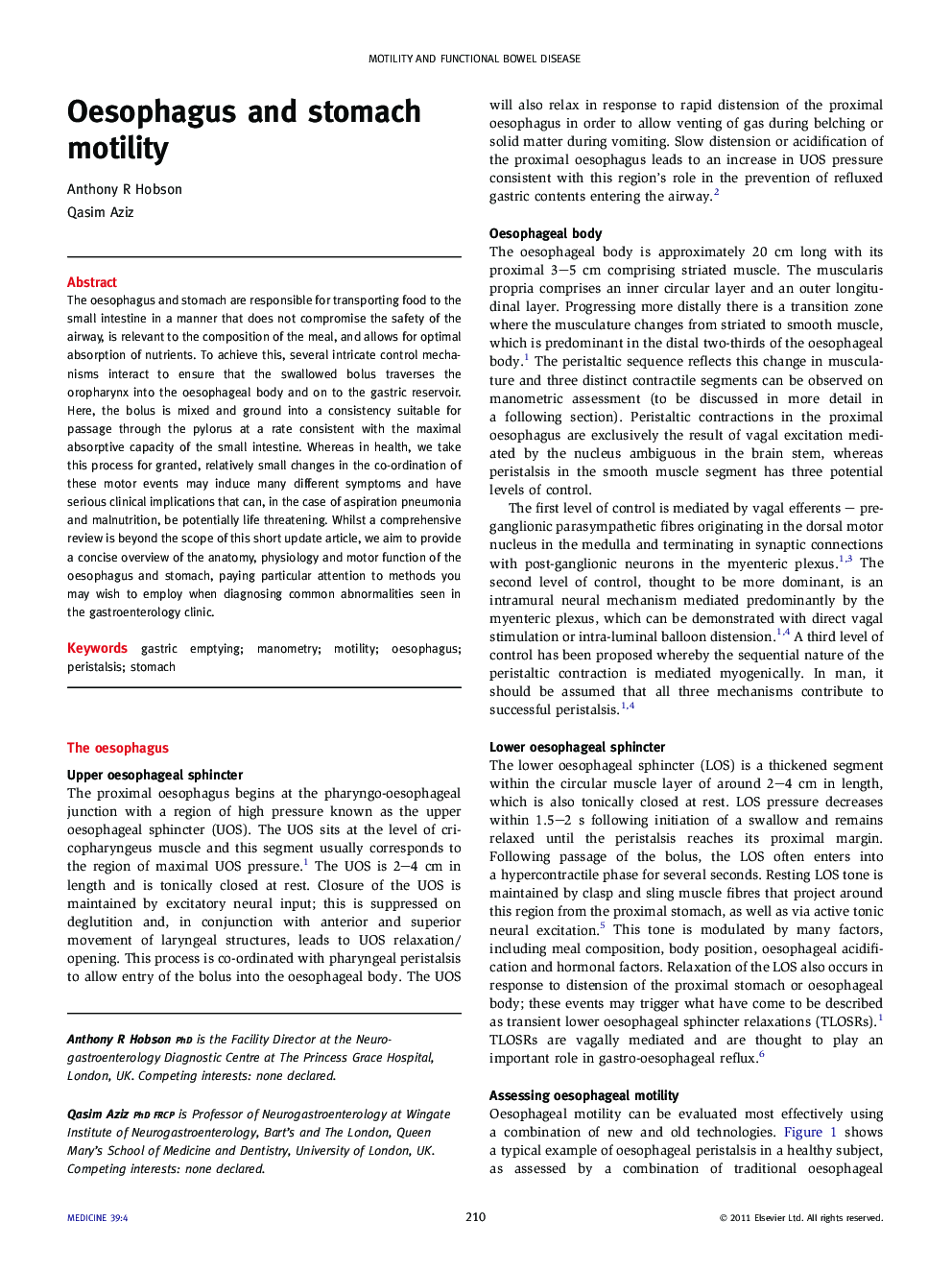| Article ID | Journal | Published Year | Pages | File Type |
|---|---|---|---|---|
| 3804187 | Medicine | 2011 | 4 Pages |
The oesophagus and stomach are responsible for transporting food to the small intestine in a manner that does not compromise the safety of the airway, is relevant to the composition of the meal, and allows for optimal absorption of nutrients. To achieve this, several intricate control mechanisms interact to ensure that the swallowed bolus traverses the oropharynx into the oesophageal body and on to the gastric reservoir. Here, the bolus is mixed and ground into a consistency suitable for passage through the pylorus at a rate consistent with the maximal absorptive capacity of the small intestine. Whereas in health, we take this process for granted, relatively small changes in the co-ordination of these motor events may induce many different symptoms and have serious clinical implications that can, in the case of aspiration pneumonia and malnutrition, be potentially life threatening. Whilst a comprehensive review is beyond the scope of this short update article, we aim to provide a concise overview of the anatomy, physiology and motor function of the oesophagus and stomach, paying particular attention to methods you may wish to employ when diagnosing common abnormalities seen in the gastroenterology clinic.
